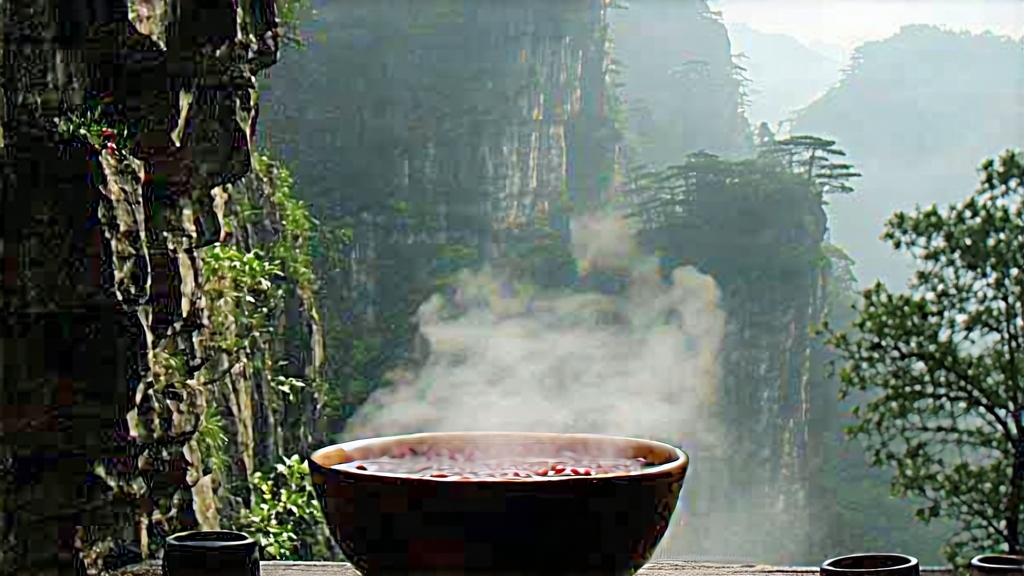
Few teas carry as much romance and reverence as Da Hong Pao, the “Big Red Robe” that grows on the vertiginous basalt cliffs of northern Fujian’s Wuyi Mountains. To the Chinese it is more than a beverage; it is a cultural relic, a living link between Song-dynasty monks, Ming emperors, and modern connoisseurs who will pay the price of a luxury car for a single ounce plucked from the six remaining mother trees. For international drinkers accustomed to the bright grassiness of Japanese sencha or the malt of Assam, Da Hong Pao offers a radically different lexicon of flavor—orchid, charred peach, wet stone, and the sweet finish Chinese tasters call yan yun, the “rock rhyme” that echoes in the throat long after the cup is empty.
Historical myth and archival fact intertwine around the origin story. The most quoted legend dates to 1385, when a Ming court scholar, stricken with fever while traveling to Beijing, was revived by tea brewed by Wuyi monks. Upon taking the throne as the Yongle Emperor, he sent imperial tailors to drape the four mother bushes in scarlet silk, an honor that gave the cultivar its name. Tax records from 1539 list “Yan Cha” (cliff tea) as tribute, and Qing-era shipping logs show Fujian merchants barreling roasted oolong to Dutch traders in Batavia, the first time the West tasted Wuyi’s mineral fire. The original mother trees, perched 600 m above the Jiuqu (Nine-Bend) Stream, still stand—protected, venerated, and no longer harvested since 2006. Cuttings taken in the 1980s created “purebred” qizhong gardens whose leaf now supplies the legitimate market, while skillful blending of related Wuyi cultivars (Rougui, Shui Xian, Tie Luo Han) keeps the Da Hong Pao name alive for everyday drinkers.
Botanically, Da Hong Pao belongs to the Wuyi qi zhong (“strange cultivar”) group, a collective of shrubs adapted to thin, mineral-rich soils weathered from volcanic tuff. The leaves are comparatively small, thick, and leathery, an adaptation that slows moisture loss on sun-baked cliffs. Spring buds emerge purplish-bronze, turning jade green with a reddish edge—an appearance locals describe as “green leaves with red borders.” Polyphenol levels run high (28–32 %), ideal for the partial oxidation that will later coax out both floral top notes and deep roasted bass tones.
Crafting Da Hong Pao is a month-long choreography of stress and rest. Picking begins in late April when two leaves and a bud still hold the morning mountain mist. The pluck is spread on bamboo trays to wither under natural shade; intermittent tossing bruises the edges, jump-starting oxidation without breaking the vein. When the leaf aroma shifts from cut grass to ripe pineapple, the tea is shaken onto 220 °C drum roasters for a brief kill-green that locks in 30 % oxidation—higher than Tie Guan Yin, lower than Taiwanese red oolongs. What follows is unique to Wuyi: two separate charcoal roasting cycles, each lasting 6–8 hours, separated by a month of “cooling” in earthen cellars. The tea master sleeps in the roasting shed, waking every 20 minutes to adjust the depth of ash over the smoldering lychee-wood embers. Too hot and the leaf carbonizes; too cool and the signature “rock rhyme” never emerges. Finished tea exits the firing at less than 3 % moisture, dark chocolate in color, with a whisper of smoke that will integrate over the following year.
Western drinkers often brew oolong like black tea—one teaspoon per mug, five minutes, boiling water—then wonder why the liquor tastes flat and astringent. Da Hong Pao demands the gongfu mindset: high leaf ratio, short steeps, and water just off a rolling boil (95–98 °C). A 120 ml gaiwan receives 6–8 g of leaf, rinsed for two seconds to wake the compressed strands. The first infusion, 10 seconds, yields a pale apricot broth hinting at orchid and grilled stone fruit. By the third infusion the color deepens to mahogany, tannins broaden, and a cooling sensation creeps down the sides of the tongue—evidence of